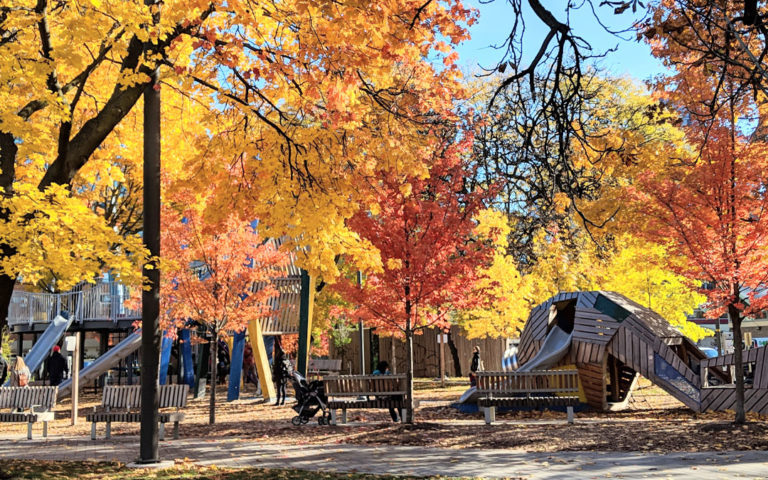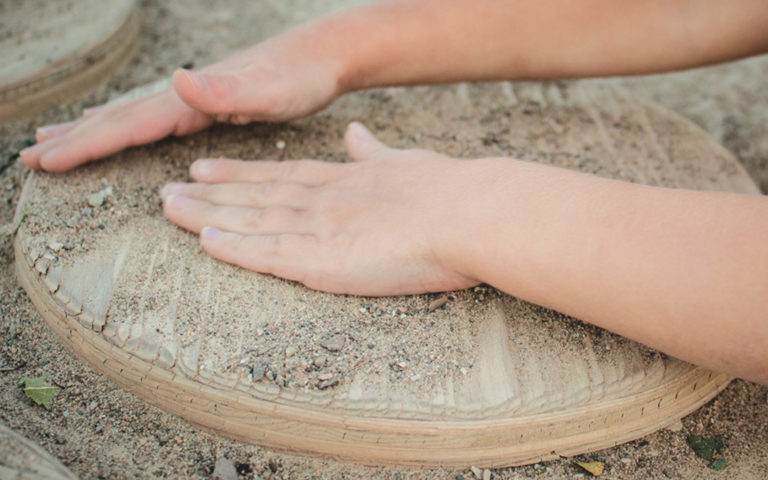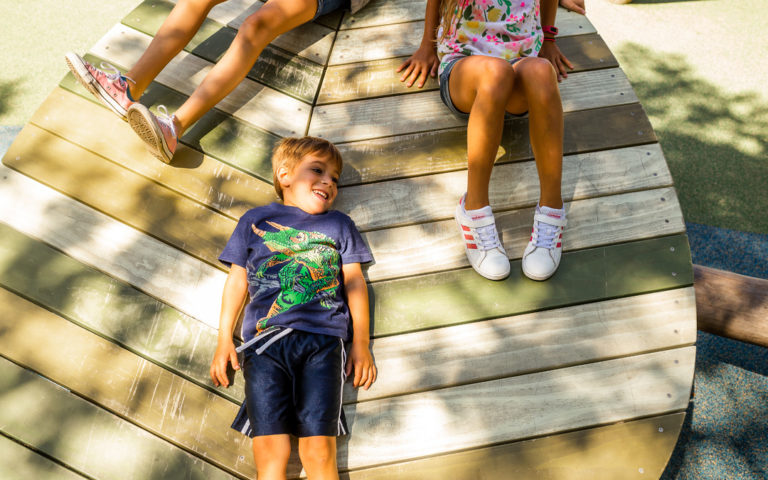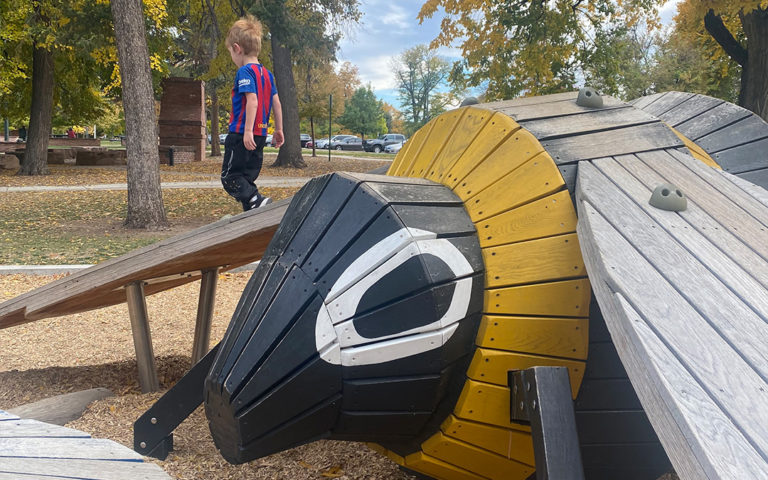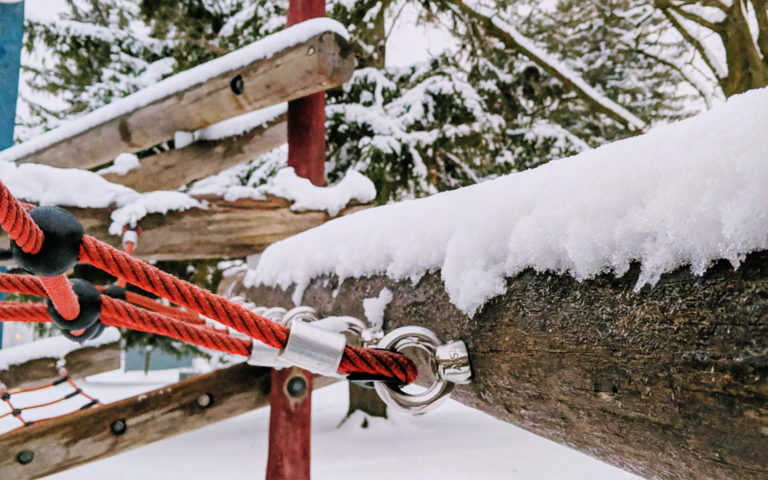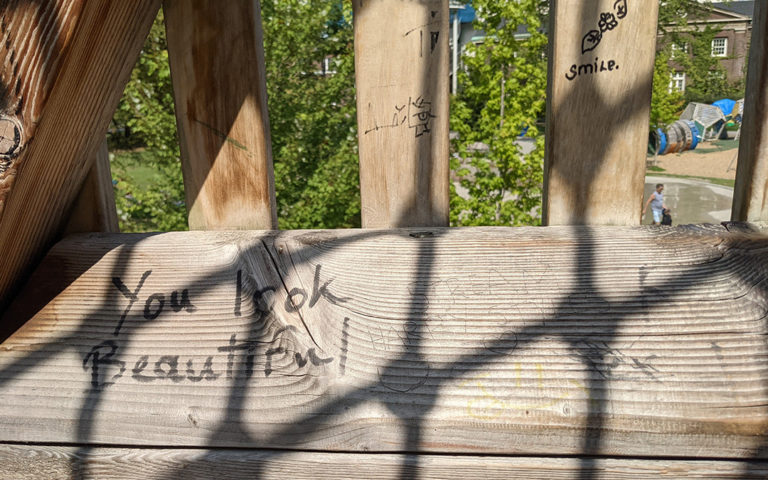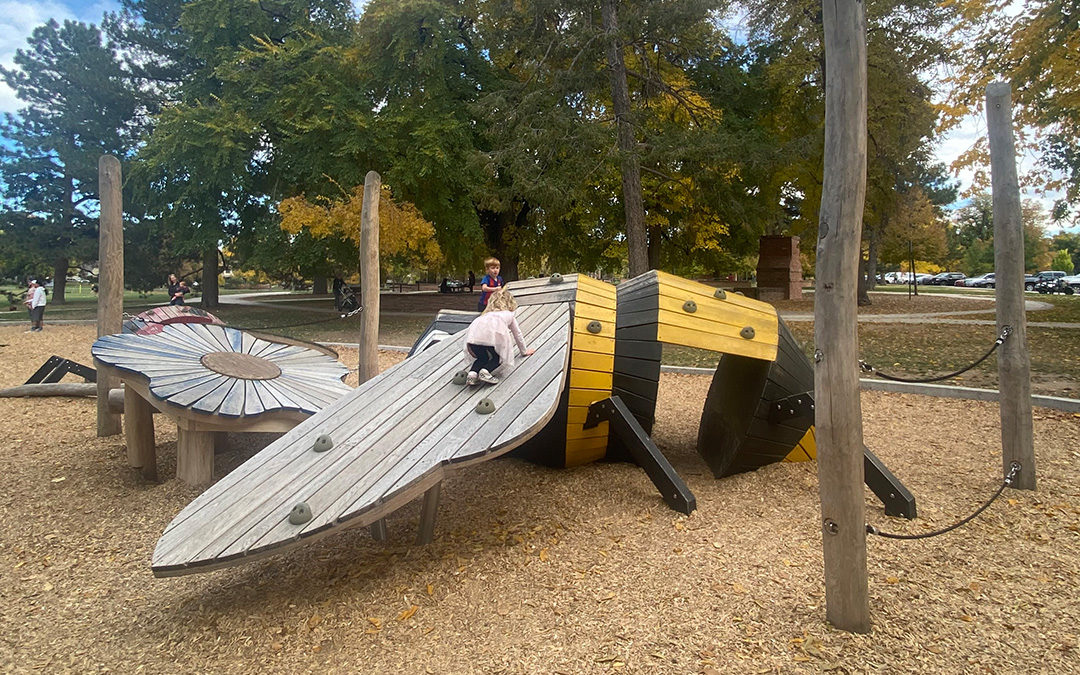
The Patina of Play
The ‘Patina of Play’ is a phrase we use at Earthscape to describe wear patterns seen after years of use by children. I have been thinking about the idea in relation to the Japanese concept of Wabi-sabi that I learned about while studying Interior Design. Here are some of my thoughts and musings.
– Janelle Zwart, playground designer
As a playground designer, I am always thinking about creating spaces with our collaborators that are shiny and new – it may be an entirely new park or a major renovation and playground replacement in an established green space. My colleagues and I are constantly looking for ways that we can improve the playground experience for users of all ages and abilities; developing new ideas and innovating solutions. It is very exciting work and one of the reasons that we are so passionate about this industry.
After the shiny-and-new, one of the most rewarding aspects of playground design happens when we visit our playground designs that have come to life. Visits often happen after the playground has been loved for a few years; we want to observe and learn how it has aged. In a sense, we want to look back in order to inform our way forward.
When we visit an older playground, we make a wide variety of observations, but the takeaways often boil down to these two: how are visitors interacting on and with the playground, and how well have the structures stood up over time?
We do our best to build for longevity and durability by using high quality materials, with anticipated use and environmental factors always front of mind. Broadly speaking, humans lean toward perceiving signs of use as ugly; detracting from an object’s worth and aesthetic appeal. In many cases that may be true, particularly with items that are not designed to have a long lifespan. But for things that are built to last, a certain patina develops over time. There are many great examples of this, from the worn stone stair treads of ancient buildings after centuries of use, to the uber-comfortable feeling of your favourite pair of old jeans (or sweatshirt or…choose your style here!)
There is an argument to be made for celebrating signs of wear as they represent three irreputable truths: nothing lasts, nothing is finished, and nothing is perfect. (Powell, Richard. 2004. Wabi Sabi Simple)
These three truths are derived from a Japanese world view known as Wabi-sabi. With origins dating back to the 15th century, Wabi-sabi is an artistic philosophy that holds up transience and imperfection as elements to be celebrated, both in nature and in human-made creations. Wabi-sabi is a philosophy I studied in Interior Design school and I am reminded of it often as I look at things around me that are well-worn and much loved.
The simple, authentic characteristics of natural materials – irregular forms, rough textures and organic colours – are what make them beautiful. Cycles of growth and decay are seen as something to be appreciated, and qualities of imperfection and impermanence are embraced as natural and inevitable.
The effects of time, use and weather on public spaces tell a story; one of human interaction and a shared history. On the playground, wear-marks are like a secret code left for children by the ones who came before them: grasp here, step there, slide in this spot, and if you push off and balance your weight just so, the soles of your shoes will carry you the full length of this angled board.
Wear patterns provide a visual map that show how play structures are used and which parts of the playground get the most love. Stain colour may be faded or surfaces rubbed smooth by the repeated touch of hands, feet or even bottoms!
One of the loveliest qualities of wood, and one reason we use it as a primary material for playgrounds, is the graceful way that it ages. When we press our fingers and palms against a wooden structure it speaks to us of all the interactions it has observed; the movement, laughter and conversations to which is it has born silent witness. Like a beloved grandparent it can feel stable and inviting, even as it softens and gnarls with time.
Western society places an immense amount of value on things that are new and untouched. While this may be a somewhat natural inclination to be mesmerized by the “new”, it also aligns with much of what is wrong with our world today. Unfettered consumerism and throwaway culture are pervasive, seen in the stuff that fills our spaces even as we struggle to find solutions to the big problems of non-renewable resource consumption and climate change.
Perhaps I can challenge you to ask yourself these questions:
What would happen if I let go of the idea that “new” is always best?
What if I could gain a new appreciation for items that are well worn – and thus, well loved?
How can I see my surroundings differently?
When I ask these questions of myself, it reminds me to see richness that I might have missed. There is a spiritual beauty in imperfection, one that children often seem intuitively drawn to, but which may escape adults a little more easily. The ability to find joy in things that are well worn offers us a connection to something larger than ourselves, and the time and space we currently occupy.

